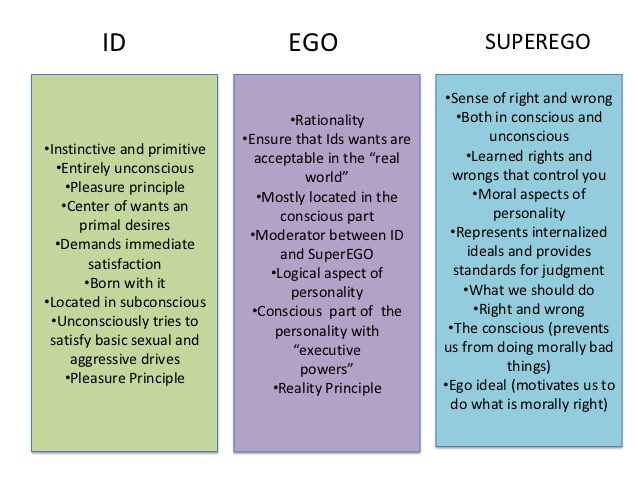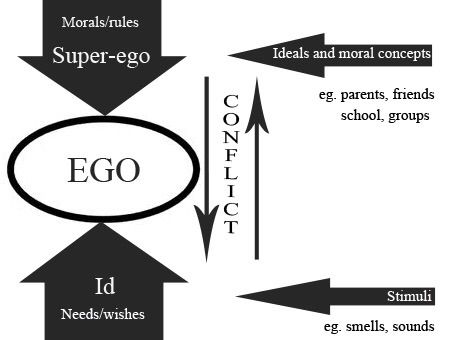
It’s geared towards problem-solving and reality-testing, enabling the person to maintain self-control. Such rational thinking is referred to as secondary process thinking. The ego may do this by delaying gratification, compromising, or anything else that will avoid the negative consequences of going against society’s norms and rules. The ego operates from the reality principle, which works to satisfy the id’s desires in the most reasonable and realistic ways. Its job is to acknowledge and deal with reality, ensuring that the id’s impulses are reigned in and expressed in ways that are socially acceptable. The second part of the personality, the ego, arises from the id. The ego and the superego develop to keep the id in check. As a result, it remains illogical and selfish. Throughout life, it remains infantile because, as an unconscious entity, it never considers reality. Newborns’ behavior is driven by the id-they are concerned only with meeting their needs. However, because all desires can’t be fulfilled right away, those needs may be satisfied, at least temporarily, through primary process thinking in which the individual fantasizes about what they desire. If the id’s needs aren’t met, it creates tension. The id is motivated by the pleasure principle, which wants to gratify all impulses immediately. It is entirely unconscious and encompasses the most primitive part of the personality, including basic biological drives and reflexes. The id is present at birth and runs on pure instinct, desire, and need. The earliest part of the personality to emerge is the id. Freud believed that early childhood experiences are filtered through the id, ego, and superego, and it is the way an individual handles these experiences, both consciously and unconsciously, that shapes personality in adulthood. In fact, his concepts and theories are the foundation of psychoanalysis, an approach to psychology that’s still studied today.įreud’s personality theory was influenced by earlier ideas about the mind working at conscious and unconscious levels.

Nonetheless, Freud was an enormously prolific thinker and his theories are still considered important.

While the id, ego, and superego are often referred to as structures, they are purely psychological and don’t exist physically in the brain.įreud’s work wasn’t based on empirical research, but on his observations and case studies of his patients and others, so his ideas are often viewed with skepticism. The three parts develop at different times and play different roles in personality, but work together to form a whole and contribute to an individuals’ behavior. One of Sigmund Freud’s most well-known ideas was his theory of personality, which proposed that the human psyche is composed of three separate but interacting parts: the id, the ego, and the superego.


 0 kommentar(er)
0 kommentar(er)
